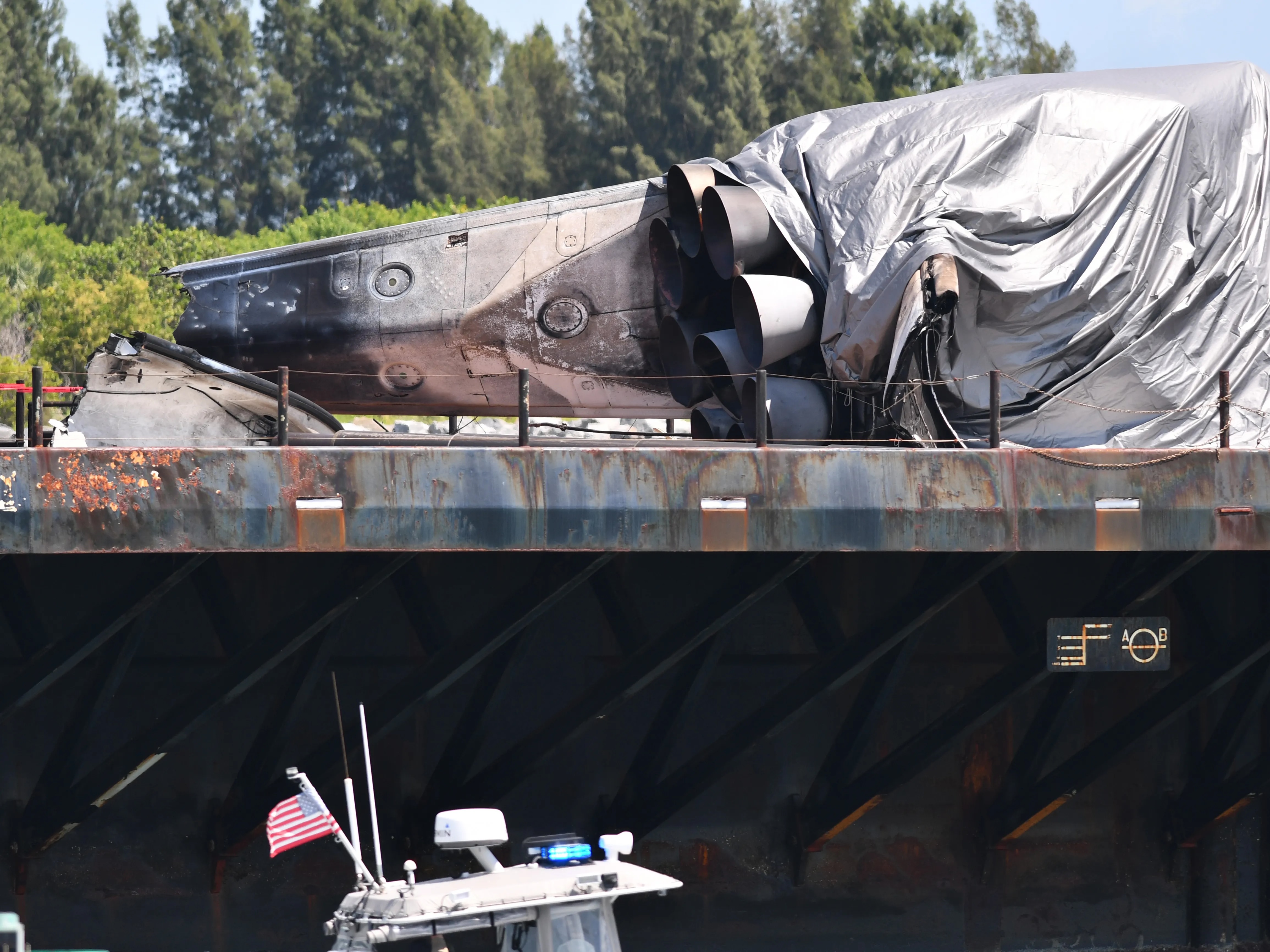1.09.2024

That wasn't supposed to be scrap metal sitting at Port Canaveral. Coming into the port Friday afternoon, the SpaceX A Shortfall of Gravitas droneship slowly creeped behind the restaurants.
But instead of the charred booster which usually stands tall after its triumphant return, only thrusters, random parts, and landing legs were visible atop the ship. A tarp covered the majority of the wreck.
Photographers and spectators gaped as the droneship arrived with guide ships. Those accompanying boats helped it turn slowly and pull into the dock used by SpaceX.
The well-flown SpaceX Falcon 9 booster met its end Wednesday morning. Following what appeared to be a routine night Starlink launch, the booster burst into flames upon landing on A Shortfall of Gravitas in the middle of the Atlantic Ocean.
This marks the first time in over three years that a first stage was lost in a landing incident after launching from Florida. The last comparable incident occurred in February 2021, when a booster returning from a Starlink launch failed to land on the Of Course I Still Love Youdroneship. That ship has since been relocated to the California coast.
This week's booster mishap was enough to spark another Federal Aviation Administration investigation of the SpaceX Falcon 9, the second in two months. Falcon 9 had just returned to flight on July 27 after an investigation into an upper-stage mishap.
On its 23rd flight, this was the booster which launched the Inspiration4 mission in 2021. Inspiration4 was the first all-civilian mission to orbit, and was commanded by Jared Isaacman. Isaacman is now commanding Polaris Dawn, which was also set to launch Wednesday morning and now remains in limbo due not only to the FAA investigation but also to poor weather forecasts. SpaceX and Isaacman have spoken only about the weather as the hold-up.
There has been very little information from SpaceX or FAA about the investigation. There are currently no further details on how this will impact upcoming SpaceX launches, including not only Polaris Dawn but also NASA's Crew-9 and Europa Clipper.
Late Friday, FAA confirmed that it had cleared SpaceX to resume launches.
The most recent unintentional first-stage booster loss from Florida was back in late December but it wasn't connected to the landing. The booster landed just fine but rough waters caused it to fall over on the Just Read the Instructions droneship.
Polaris Dawn launch scrubbed prior to this SpaceX Starlink launch
Before this mishap, Polaris Dawn was set to liftoff just after 3:30 a.m. that same Wednesday morning. However, SpaceX scrubbed the liftoff hours prior due to poor weather forecast in the coming days.
The mission will see four civilian astronauts launch to space, andpreform the first civilian spacewalk. Unlike NASA and Axiom astronauts, Polaris Dawn is not docking with the space station. This leaves the crew reliant on the resources they have in the Dragon, which means they have to make sure it will be safe to return during a set time period. If weather conditions are poor, it can provide challenging and dangerous conditions to the crew and SpaceX recovery teams who meet them at the splashdown site.
So while Polaris Dawn stood down, SpaceX was able to get in this Starlink mission from Space Launch Complex 40. However, while the upper-stage put the internet satellites in orbit as expected, the first-stage booster suffered the mishap, giving those who watched from the port a view of what remained as it arrived back on the coast.
Quelle: Florida Today
